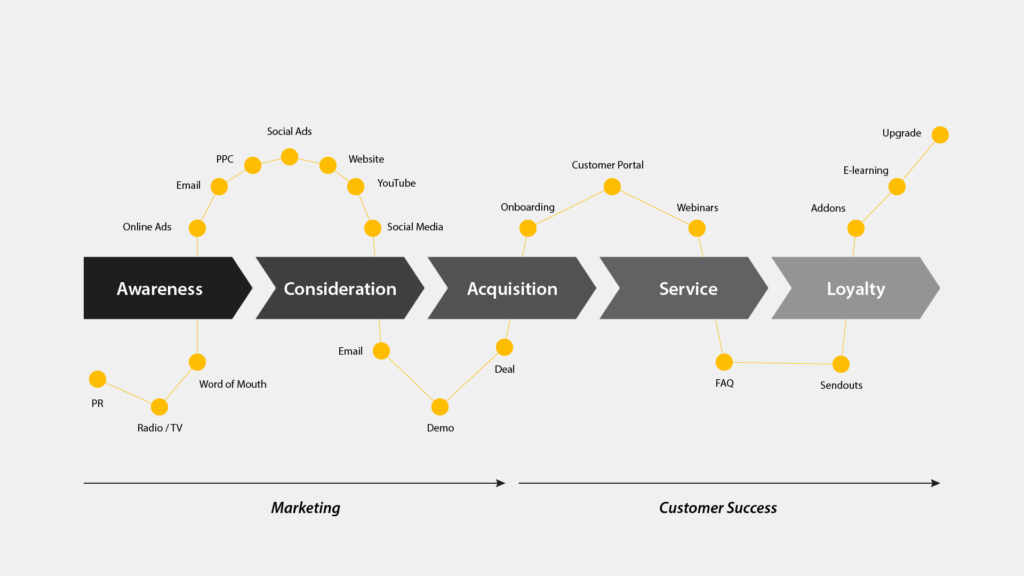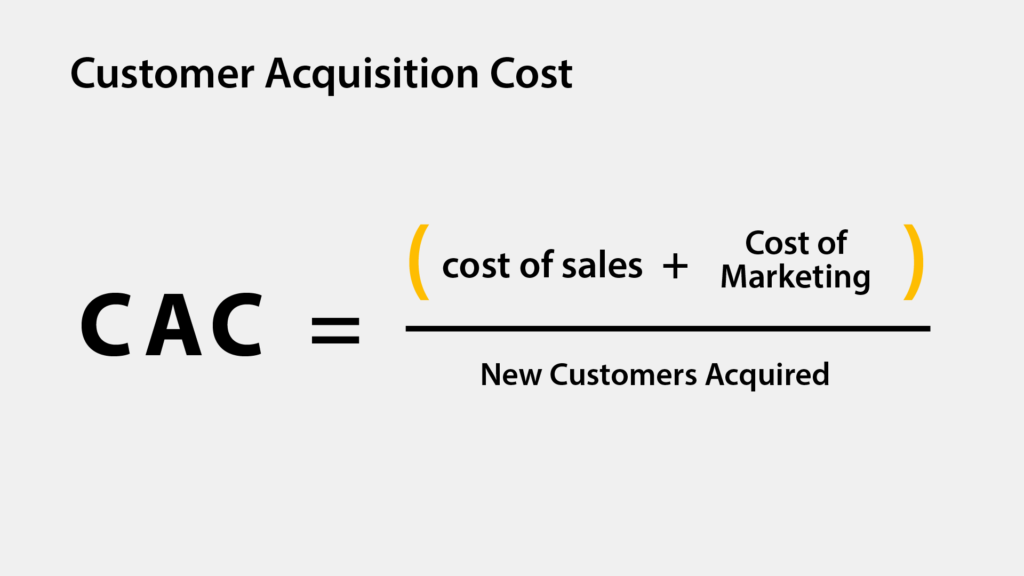
Customer acquisition is the art-meets-science practice of, well, acquiring customers. In a world where everyone can post pretty much anything online (and ergo, there is a lot of noise around everything you can imagine), customer acquisition strategies bring order into chaos and help you make sense of your marketing and sales funnels.
What chaos am I talking about? What’s the difference between customer acquisition, growth hacking, and performance marketing? Why so many terms for things that are so tightly connected
If you’re feeling confused, no worries. I am here to help. Read on and find out more.
Customer acquisition is the collection of strategies and techniques a company uses to draw leads into a sales funnel (or buyer’s journey, if you want to call it like that), and then converting them into paying customers.
Customer acquisition can be done in many ways. However, if there is a way it cannot actually be done, it is on fast-forward. More on this, however, is in my following section.
If you’ve been on the internet for a hot minute, you know that pretty much everything under the Sun can be hacked. From dishwashing hacks to fitness hacks and marketing hacks, the world of WWW is filled with quick tricks for quick wins.
There’s absolutely nothing wrong with that. Some companies are at a point in their stage where they need the “quick wins”. And that’s OK. But whoever you are and regardless of what type of company you might run, you have to think of the long-term strategy too -- and that is precisely where customer acquisition kicks in.
Where customer acquisition helps you create funnels that attract & convert visitors into users and/or customers in a continuous sustainable way, growth hacking comes with small, quick fixes meant to optimize your marketing efforts for maximum wins at minimum effort. Ultimately this is sustainable ROAS which is key for sustainable business growth.
In theory, growth hacking sounds very attractive. After all, who doesn’t want to make small investments and get quick returns on them?
In reality, however, the lack of an overarching strategy (associated with growth hacking) can lead to plenty of quick wins, but no long-term wins. And there’s only so many tweaks you can make before you run out of growth hacks and have to settle down into a steady, sturdy, healthy plan for growing your business.
Let me emphasize this: growth hacking works. But it is not the kind of approach you should hold on forever. Sooner or later, you will need a data-driven customer acquisition specialist to bring order into your acquisition strategy.
The customer acquisition process begins at the top of the funnel -- or the Awareness stage, as HubSpot would call it in their “Buyer’s Journey” paradigm. Essentially, this is the stage at which potential buyers are only growing mildly familiar with you, your product, and/or your brand.
In a traditional marketing landscape, this would have been done on various channels:
...And so on.
In a digital marketing landscape, things are not that different. The channels have changed, but in essence, the Awareness phase is still where you familiarize people with your company. The main difference between traditional and digital marketing here lies in two main aspects:
Email address collection (lead gen funnels for example) plays a hugely important role in the awareness phase because that’s how you will stay in touch with people who have already gotten “acquainted” with you. Think of it as the equivalent of asking someone’s phone number after meeting them at a party (just in case you want to ask them out on a date, for example).
Once people have been drawn into the funnel, it’s time for you to start pushing them to the Middle of the Funnel (or “Consideration”) phase. This is where people are aware of your product, but they are either considering whether or not to purchase it or they are comparing it with other products in the same category.
The way to win this phase is by making sure your product or service stands out and fits your ideal customer profile’s needs like a glove. Typically, pricing and comparison pages, reviews and social proof, feature spotlights, product showcases, as well as real case studies and Enterprise-level whitepapers are what helps at this stage. These can be “fed” to users in the Awareness stage through more blog content, ads, or email (depending on how you want to set your strategy).
Last, but definitely not least, the Bottom of the Funnel (or “Decision” phase) is where customers decide to actually buy from you. Calls with your Sales team, very sales-oriented emails (like promotion emails on Black Friday, for example), webinars, and other very product-focused types of assets help you bring in someone who’s still lingering into your customer database.
In addition to the three “classic” stages of a Sales/Marketing funnel, there is also Loyalty and Retargeting to consider. Loyalty is addressed to that part of your marketing process that helps you keep customers by your side (which is extremely valuable in pretty much every business model). Retargeting (not just in the PPC sense) is meant to bring back people who have fallen off the funnel but might still be interested in (eventually) making a purchase.
Most times, Customer Acquisition does not deal with loyalizing customers, but it can deal with retargeting campaigns meant to re-align your leads to your product or service.
To exemplify everything explained above, here is an example of a journey the buyer can take from awareness to decision:

Digital marketing happens online. Unfortunately, however, most people who give online marketing a try either only focus on one or two channels or lack the overarching strategy mentioned above (the “thing” that connects the dots and helps you focus on more than just traffic, clicks, views, or other “vanity” metrics).
In essence (if we want to keep it super-short), there are two main types of digital marketing channels used in customer acquisition: paid and organic. Let’s take a closer look at each of them:

Paid customer acquisition happens on paid channels (as the name suggests). These channels can be any of the following (or any others that follow a similar model):
...and more.
More often than not, paid customer acquisition is associated with a pay-per-click model -- meaning that you pay for either how many clicks you get on your ads or by how many impressions you get. But that’s an entirely different discussion (one we will definitely have soon 🙂 ).
Organic customer acquisition usually revolves around organic channels which is commonly known as “SEO”. This means that, instead of feeding a potential audience with ads (based on their interests, location, or whatever other criteria you may deem accurate), you feed people with content that is based on what they search on Google, Bing, or other search engines.
The value of the content to your potential lead will determine the authority you can build in your industry.
Organic customer acquisition is almost synonymous with Search Engine Optimization (SEO), which is a set of best practices meant to bring your content (educational in nature most of the times) on the first page of your targeted search engine, for specific search queries people make (and which are related to your product).
Aside from SEO, some companies also find value in Press Releases and partnerships, which are also organic in nature.
Keep in mind: organic is not one and the same with “free”. It is also not a guarantee (paid ads aren’t either, for that matter). The key to finding what works for your specific business and audience is testing and finding a collection of channels that underscore your overarching customer acquisition strategy and are cost-effective for you.
There’s no given recipe in customer acquisition -- and whoever tries to sell you that is either lying or not knowledgeable enough. Data speaks louder than opinions -- and true, successful, long-term-result-yielding customer acquisition is based on data. To acquire said data and make the right decisions in optimizing your customer acquisition processes, you need to test things out.
Once you have tested out different channels, you can proceed to calculating your CAC (Customer Acquisition Cost) and start investing more in those channels and specific techniques that work for your specific business and your needs (as well as your audience).

What is customer acquisition?
Simply put, customer acquisition is the set of marketing strategies and techniques businesses use to gain more customers.
Why is customer acquisition cost important?
Your customer acquisition cost is important because it will help you determine how much it actually costs to attract one customer. If the cost is too high, it can have a negative influence on your Customer Lifetime Value (how much value a customer brings into your business over the course of their lifetime as a customer) and your businesses net profit. Knowing what your customer acquisition cost is helps you optimize your customer acquisition strategy and processes by helping you determine what works and what doesn’t.
Why calculate customer acquisition cost?
You should calculate customer acquisition cost because it helps you understand not only how much money goes into acquiring customers, but also whether or not your current strategy is working.
How to do customer acquisition?
There is no one “given” way to do customer acquisition. Your customer acquisition strategy should be adapted to your product, industry, business needs, customer avatar, and, very importantly, data and what it “speaks” to you.
How to improve customer acquisition?
Listen to your data, and do it carefully. The most solid customer acquisition strategies are built around data on who the customers are, where they land in your funnel the most, and how they convert in the most efficient ways.
What are customer acquisition costs?
Your customer acquisition cost will depend on a variety of factors, including your industry, target audience, and whether you choose to pour more money into organic (long-term-results-yielding), paid (shorter-term-results-yielding), or a combination of the two.